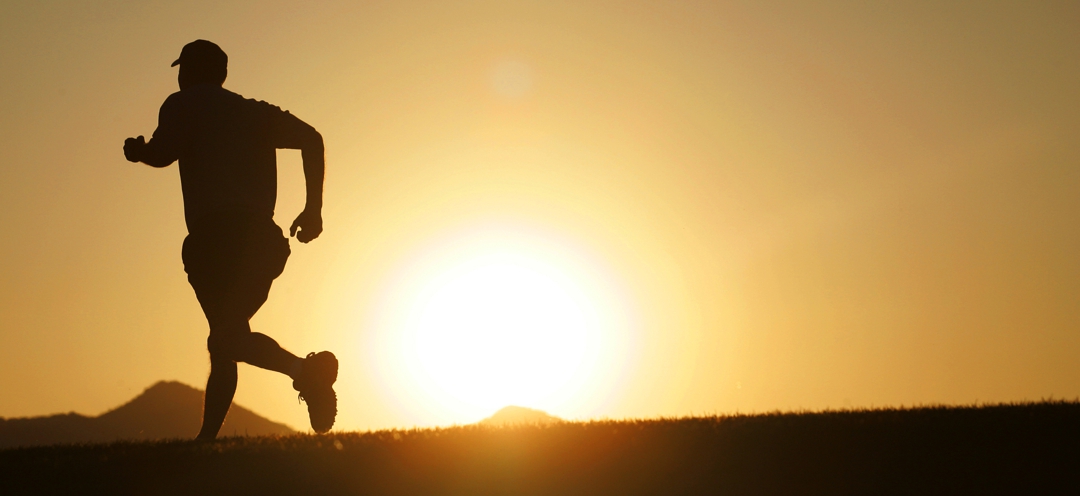
Summers here in Tucson can be brutal. And while you might want to escape to air conditioning all the time, being inside 24/7 isn’t always possible. Whether you’re in tip top condition and anxious to get out and keep up with your training routine, or a regular Joe or Josephine who just wants to walk their dog – Sabine Harrington, Registered Clinical Exercise Physiologist, explains just why it’s important to understand how our body responds to heat so we can respond safely.
“Our bodies are amazing. When faced with high temperatures, the human body adapts. The volume of blood increases, and diverts more blood to skin surface to dissipate heat via convection. We also sweat more in the hopes that this water will evaporate taking excess heat with it. The main goal is homeostasis – keeping your core temperature from increasing too much.” Sabine explains.
How effective your body is at acclimatizing to heat is dependent on a host of factors, and if your body is unable to acclimatize, you risk heat stroke and heat exhaustion.
“Heat stress can be adaptive, but heat exhaustion and heat stroke are dangerous territory, especially in our climate! Know the signs.
Heat as part of the work out
Depending on your goals (training or surviving the summer), you can use heat as an adaptive ‘acute stress’ to complement your traditional workouts, or at least make you more comfortable with daily heat. Think of it as a neuro-vascular workout to keep the body sharp! The intricate communication between the nervous system and the cardiovascular system enables us to thermoregulate, and this is good practice for our bodies. It’s important to remember that working out in the heat will raise your heart rate proportionately much more than working out at the same intensity in cooler temps – for example, a brisk walk on a June morning may be just as strenuous as a light jog in March on your heart. Pay attention to how you’re feeling, your heart rate, and your hydration levels.
Heat & Heart Conditions
Those with cardiovascular challenges (coronary artery disease, congestive heart failure, etc.) are at increased risk of overheating because the heart and vascular system have increased work to do. If the heart muscle itself can’t do as much work, the ability to get rid of heat is limited and the risks associated with heat are increased.
In addition to the physiological constraints of heart related conditions, many common medications also impact the body’s ability to respond to heat including those used for heart-related conditions. Beta-blockers interfere with dilation of the skin blood vessels, diuretics remove water from the body, calcium channel blockers reduce the heart’s work capacity and ACE inhibitors interfere with fluid balance.
If you have a known heart condition you may need to be more vigilant about hot weather. Support your body with proper fluids and electrolytes and find ways to keep your core temp down during the day.” states Sabine.
All should follow these guidelines, heart condition or not:
- Avoid the sun at the hottest time of the day, between 9 a.m. and 4 p.m. (Unless you are specifically conditioning yourself for an outdoor athletic event or occupation – in which case, do it gradually!)
- Drink plenty of water. At least 8 glasses of water, but more if you’re being active.
- Wear light, loose fitting clothes.
- Enjoy cool foods, salads and fruit which have a high water content as well as being nutritionally dense.
- Avoid drinking alcohol as it can dehydrate you.
- Talk with your primary care provider if you’re starting a new exercise regime. If you don’t have a primary care provider you can find one here.
 Sabine Harrington works with patients in our Cardiac Rehab facility. She has a M.S. in Physiological Sciences from the University of Arizona, B.A. in Paleobiology from the University of Pennsylvania, is a Registered Clinical Exercise Physiologist with the American College of Sports Medicine and a movement instructor with 10 years experience.
Sabine Harrington works with patients in our Cardiac Rehab facility. She has a M.S. in Physiological Sciences from the University of Arizona, B.A. in Paleobiology from the University of Pennsylvania, is a Registered Clinical Exercise Physiologist with the American College of Sports Medicine and a movement instructor with 10 years experience.